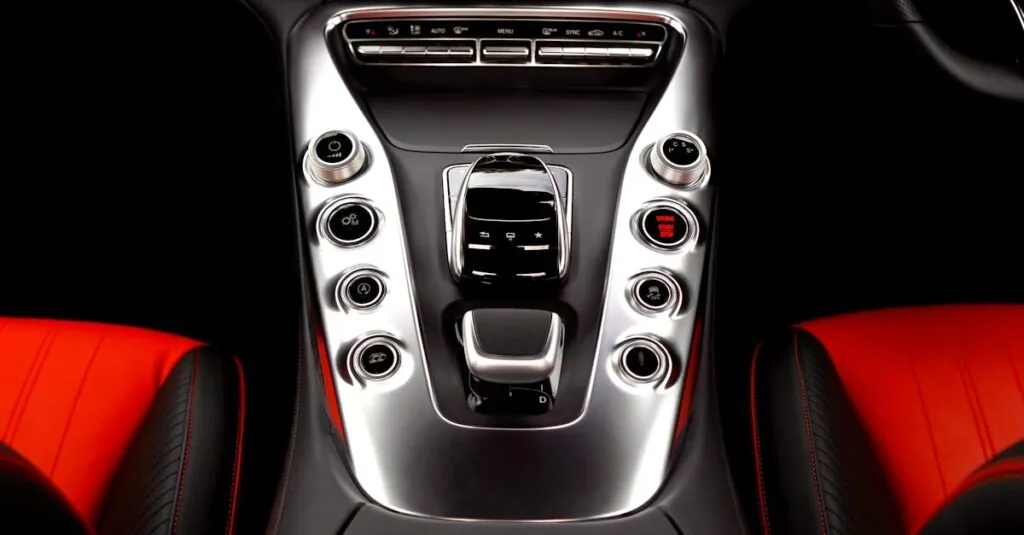Imagine walking into a room and effortlessly adjusting the lighting with just a tap on your smartphone. Smart switches and dimmers make this dream a reality, turning any ordinary space into a high-tech haven. They’re not just about convenience; they’re about transforming your home into a smart sanctuary where ambiance meets control.
Table of Contents
ToggleOverview of Smart Switches and Dimmers
Smart switches and dimmers represent a significant advancement in home automation technology. These devices allow users to control lighting with a smartphone or voice commands. Flexibility is a key benefit, as they can be integrated with various home automation systems. Enhanced accessibility enables users to manage lighting from anywhere within or outside the home.
Energy efficiency is another important aspect. Smart dimmers can adjust brightness levels, reducing energy consumption compared to traditional switches. Studies indicate that dimming lights by 50% can save up to 20% on energy bills. Moreover, they often come with scheduling features that automatically turn lights on or off at specific times.
Safety also plays a vital role. Many smart switches include features like away modes, which simulate occupancy when homeowners are absent. This feature deters potential intruders by creating the illusion of someone being home. Additionally, remote access allows monitoring of lights and energy use, providing peace of mind.
Compatibility enhances the appeal of smart switches and dimmers. They can work with various smart home ecosystems, including Amazon Alexa, Google Assistant, and Apple HomeKit. This interoperability simplifies integration with existing smart devices and enhances user experience.
Installation tends to be straightforward. Most smart switches replace standard switches, utilizing existing wiring. Dimmers usually require only basic electrical knowledge, making them accessible for DIY enthusiasts.
Device customization offers further advantages. Users can set scenes or moods tailored to different activities. Whether it’s a movie night or a dinner party, smart lighting creates the desired atmosphere effortlessly.
Types of Smart Switches and Dimmers
Smart switches and dimmers come in various types, each designed to cater to different needs and preferences. Understanding these types helps users select the right option for their smart homes.
Wi-Fi Smart Switches
Wi-Fi smart switches connect directly to home Wi-Fi networks, allowing remote access through smartphones or tablets. These devices typically require no additional hubs, simplifying installation. Users can easily integrate Wi-Fi switches into existing networks without complex setups. This type often supports voice commands through virtual assistants like Amazon Alexa or Google Assistant. Many models offer features such as scheduling and energy monitoring, enhancing user convenience and efficiency. Compatibility with major smart home ecosystems makes these switches an attractive option for those seeking versatility and ease of use.
Zigbee and Z-Wave Smart Switches
Zigbee and Z-Wave smart switches utilize mesh networking for reliable connectivity. These switches often require a dedicated hub for operation, but they provide enhanced communication between devices. Users can benefit from reduced interference, which improves performance in larger homes. Zigbee devices typically offer a broader range and better battery life compared to Wi-Fi alternatives. Z-Wave switches stand out for their strong focus on security, ensuring secure communication within the network. Integration with existing smart home systems, including compatible hubs, provides a flexible solution for expanded automation and control.
Features and Benefits
Smart switches and dimmers offer various features that improve lighting control and enhance home environments.
Remote Control Capabilities
Remote control capabilities enable users to manage lighting from anywhere using smartphones or voice assistants. Increased flexibility improves accessibility, allowing for adjustments even when away from home. Users can easily set the mood for arriving guests or ensure lights are off while out. Additionally, most smart switches and dimmers integrate with ecosystems like Amazon Alexa and Google Assistant, simplifying voice commands. Advanced features such as group controls allow simultaneous operation of multiple lights, further streamlining user experience.
Scheduling and Automation
Scheduling and automation features enhance daily routine management. Users can set specific times for lights to turn on or off, promoting energy conservation. For example, programming lights to adjust with sunrise and sunset fosters a natural lighting environment. Automation provides options for setting scenes based on activities, ranging from movie nights to dinner parties. Predefined schedules also contribute to home security, as lights can simulate occupancy while owners are away. This combination of convenience and safety makes smart switches and dimmers valuable assets in modern homes.
Installation Process
Installing smart switches and dimmers typically offers simplicity and convenience. Understanding the best approach for installation makes the process seamless.
DIY vs. Professional Installation
Choosing between DIY and professional installation often depends on individual comfort levels. Many find smart switches and dimmers suitable for DIY, since they usually require straightforward wiring and mounting. Basic tools like screwdrivers and wire strippers often suffice. For those unfamiliar with electrical work, hiring a professional might provide peace of mind. Professionals ensure proper connections and compliance with local codes. Assessing personal capability ensures a successful installation experience.
Compatibility with Existing Wiring
Compatibility with existing wiring varies by device and home setup. Most smart switches and dimmers function with standard residential wiring, which simplifies installation in many cases. Understanding the current wiring type is essential—single-pole setups work well with basic smart devices, while three-way setups may require additional components. Some devices need neutral wires, whereas others operate without them. Reviewing the wiring configuration before purchase can prevent potential complications during installation.
Popular Brands and Models
Multiple brands lead the smart switch and dimmer market, providing various options to suit different needs. Lutron Caseta offers reliable models like the Lutron Caseta Wireless Smart Lighting Kit, known for its ease of installation and compatibility with various systems. TP-Link Kasa also stands out, featuring the Kasa Smart Wi-Fi Light Switch, which supports voice control through Amazon Alexa and Google Assistant.
Leviton provides robust options, including the Decora Smart Wi-Fi Dimmer. This model supports advanced features like scheduling and automation. Furthermore, GE’s C by GE line offers smart switches that integrate seamlessly with Google Assistant, ensuring a user-friendly experience.
Philips Hue’s smart dimmers enhance Philips Hue light bulbs, allowing for convenient dimming and scene setting. Wemo provides the Wemo Smart Light Switch, which works well with Apple HomeKit, catering to Apple ecosystem users. Each brand excels in specific features, ensuring wide-ranging choices for consumers.
Consideration of compatibility and unique functionalities helps in selecting the right product. When it comes to energy efficiency, both Lutron and TP-Link models showcase impressive capabilities in power saving, making them popular choices. Moreover, users looking for smart automation should explore models with advanced scheduling and grouping features, ensuring maximum versatility.
With safety features like occupancy simulation, these brands prioritize home security, providing peace of mind for users. Overall, consumers benefit from a diverse range of reliable products designed to enhance the smart home experience. Selecting the right brand and model ultimately depends on individual preferences and specific home automation needs.
Smart switches and dimmers are revolutionizing how people interact with their home lighting. By integrating convenience with advanced technology they offer users the ability to control their environment effortlessly. The energy efficiency and safety features further enhance their appeal making them an essential addition to modern homes.
With a variety of options available users can easily find a solution that fits their specific needs and preferences. Whether through DIY installation or professional help these devices provide a seamless transition into a smarter living space. As technology continues to evolve smart switches and dimmers will undoubtedly play a crucial role in shaping the future of home automation.




